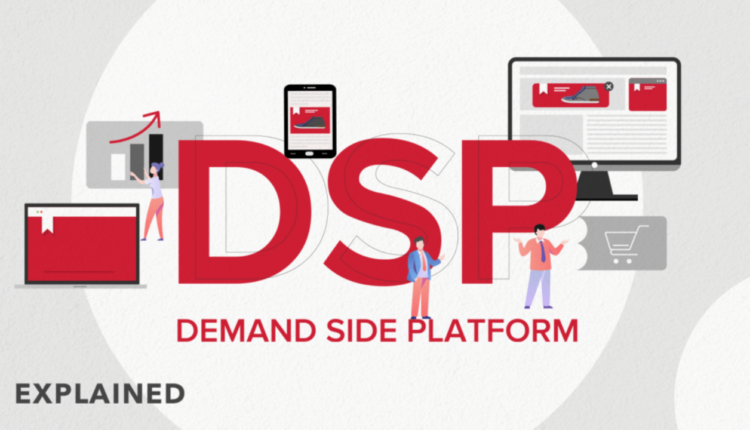In the ever-evolving world of digital advertising, Demand Side Platforms (DSPs) play a crucial role in helping businesses reach their target audiences effectively. If you’re new to the concept, don’t worry—this guide will break down what DSPs are, how they work, and why they’re important for modern advertising.
What are Demand Side Platforms (DSPs)?
A Demand Side Platform, or DSP, is a technology platform that allows advertisers to buy digital ad inventory across various websites and apps through a single interface. It enables businesses to manage, optimize, as well as automate their ad buying processes, making it easier to target specific audiences and achieve advertising goals.
How Do They Work?
1. Ad Inventory and Auctions
DSPs operate through real-time bidding (RTB) systems. When a user visits a website or app, an auction is triggered to sell the ad space available on that page. DSPs participate in these auctions by placing bids based on the advertiser’s predefined criteria and budget. The highest bid wins, and therefore the ad is displayed to the user.
2. Audience Targeting
One of the key features of DSPs is their ability to target specific audiences. DSPs use data from various sources, such as user behavior, demographics, and interests, to help advertisers reach their desired audience. This targeting can be highly granular, allowing for precise ad placement based on factors like location, age, and browsing habits.
3. Campaign Management
DSPs provide tools for managing and optimizing ad campaigns. Advertisers can set their budgets, choose targeting options, and create ads. The platform also tracks the performance of campaigns in real-time, offering insights into metrics such as impressions, clicks, and conversions. This data helps advertisers make informed decisions and adjust their strategies as needed.
4. Integration with Other Technologies
DSPs often integrate with other technologies like Data Management Platforms (DMPs) and Supply Side Platforms (SSPs). DMPs provide additional audience data and insights, while SSPs help publishers sell their ad inventory. This integration enhances the efficiency and effectiveness of ad campaigns.
Why Use Demand Side Platforms?
1. Efficiency and Automation
DSPs streamline the ad buying process by automating tasks that would otherwise require manual intervention. This automation saves time and reduces the complexity of managing multiple ad campaigns across different platforms.
2. Advanced Targeting Capabilities
With access to vast amounts of data, DSPs offer advanced targeting options that can improve the relevance of your ads. This means your ads are more likely to reach people who are interested in your products or services, leading to higher engagement and better results.
3. Cost-Effective Advertising
DSPs use real-time bidding to purchase ad inventory at competitive prices. By bidding only on impressions that meet your criteria, you can optimize your ad spend and ensure that your budget is used effectively.
4. Comprehensive Analytics
DSPs provide detailed analytics and reporting features that allow you to track the performance of your campaigns. This data helps you understand which ads are performing well and which are not, enabling you to make data-driven decisions and improve your advertising strategy.
Choosing the Right DSP
When selecting a DSP for your advertising needs, consider the following factors:
- Ease of Use: Look for a platform that is user-friendly and easy to navigate. A good DSP should offer intuitive tools and also a straightforward interface.
- Targeting Options: Ensure the DSP provides robust targeting capabilities that align with your advertising goals. This includes options for demographic, geographic, and also behavioral targeting.
- Integration Capabilities: Check if the DSP integrates well with other technologies you use, such as DMPs or CRM systems. Integration can enhance the effectiveness of your campaigns.
- Support and Service: Choose a DSP that offers reliable customer support and service. Good support can help resolve issues quickly, thus ensuring smooth campaign management.
The Future of Demand Side Platforms
As digital advertising continues to grow and evolve, DSPs are expected to become even more sophisticated. Advances in technology, such as artificial intelligence and machine learning, are likely to enhance targeting capabilities and improve campaign optimization. Additionally, as data privacy regulations become more stringent, DSPs will need to adapt to ensure compliance while still delivering effective advertising solutions.
Conclusion

Demand Side Platforms are indeed a powerful tool for modern advertisers, offering a streamlined and efficient way to manage digital ad campaigns. By leveraging advanced targeting capabilities, automation, and comprehensive analytics, DSPs help businesses reach their target audiences effectively and also optimize their advertising spend. Whether you’re new to digital advertising or looking to enhance your current strategy, understanding how DSPs work can provide valuable insights into improving your ad campaigns and achieving better results.
Frequently Asked Questions (FAQs)
1. What is a Demand Side Platform (DSP)?
A DSP is a technology platform that allows advertisers to buy digital ad inventory across multiple websites as well as apps through real-time bidding.
2. How do DSPs improve ad targeting?
DSPs use data on user behavior, demographics, and interests to target specific audiences more precisely, thus ensuring ads reach the most relevant users.
3. What are the benefits of using a DSP?
Benefits include increased efficiency and automation in ad buying, advanced targeting capabilities, cost-effective advertising through real-time bidding, and also comprehensive analytics for campaign optimization.
4. How do I choose the right DSP for my business?
Look for a DSP with user-friendly tools, robust targeting options, good integration capabilities, as well as reliable customer support to best meet your advertising needs.


